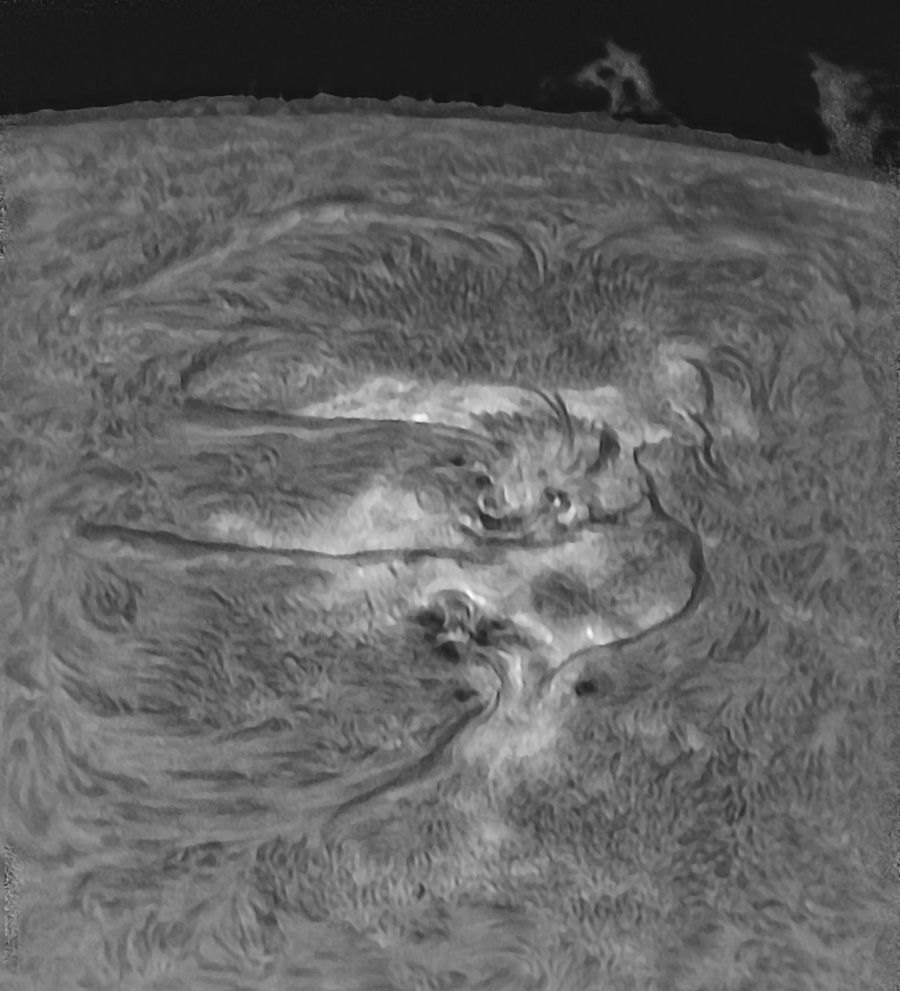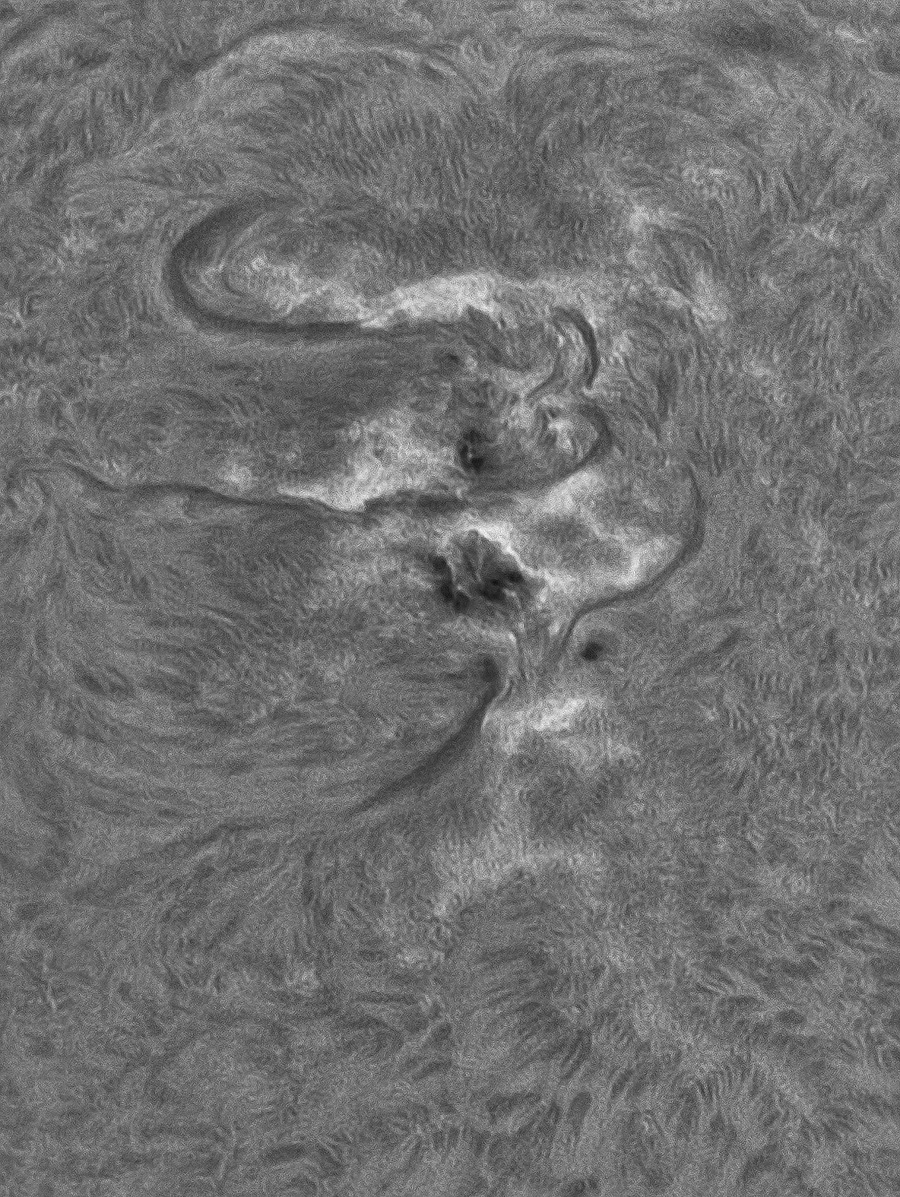Two ARs
05/30/2024. Two active areas, one quiescent, the other a sea of chaos are working their way across the face of the Sun. These images are distilled from high-gain (350), short-exposure (1ms), small ROI (855x600), 2x2 binned, 16-bit clips stacked with 3.0x drizzle in AS!4 to get some pixels to work with. The ASI178MM gave me about 47 frames per second, so these clips The clips are 10,000 frames each of which I've used 200. The air was reasonably still. I focused maniacally and needed about three minutes to capture each clip. I used a flatfield even for the small ROI. Processing was mostly Smart Sharpen in Photoshop with some opportunistic sharpening. I did some shadow / highlight work both before and after the fact. This is pretty much all I've got.
Yeah, you can click 'em. They won't enlarge a lot but they'll be better. All these were done using the 0.5x compressor mounted inside the 1.25-inch snout (yeah, I do need to measure the image scale produced by this arrangement).

The quiet one.

The AR formerly known as 3664
05/31/2024. Again... as early as possible on a hazy day with more variation in the sky's clarity than I would have preferred. The air was reasonably steady, just milky or milkier from one minute to the next. For once, I cranked the gamma on some of today's clips to make up for the low-contrast sky. Worked well enough.

The quiet one, take two. (Rotated 90 degrees from yesterday's view for no good reason.)

The former 3664, still crazy.

Former 3664, plus prominences, plus a huge filament.
The closeups are roughly 800x600 pixel, 10,000 frame clips captured at gain 350 and exposures of about 1.8ms, drizzled x3. The close views are constructed from the best 1,000 frames. The wider field is built from one one-thousand-frame clip processed twice, once for the disk, once for the rim. Primary sharpening (and much of the histogram work) for today's images was via ImPPG's deconvolution routine rather than Photoshop's Smart Sharpen.
:: top ::